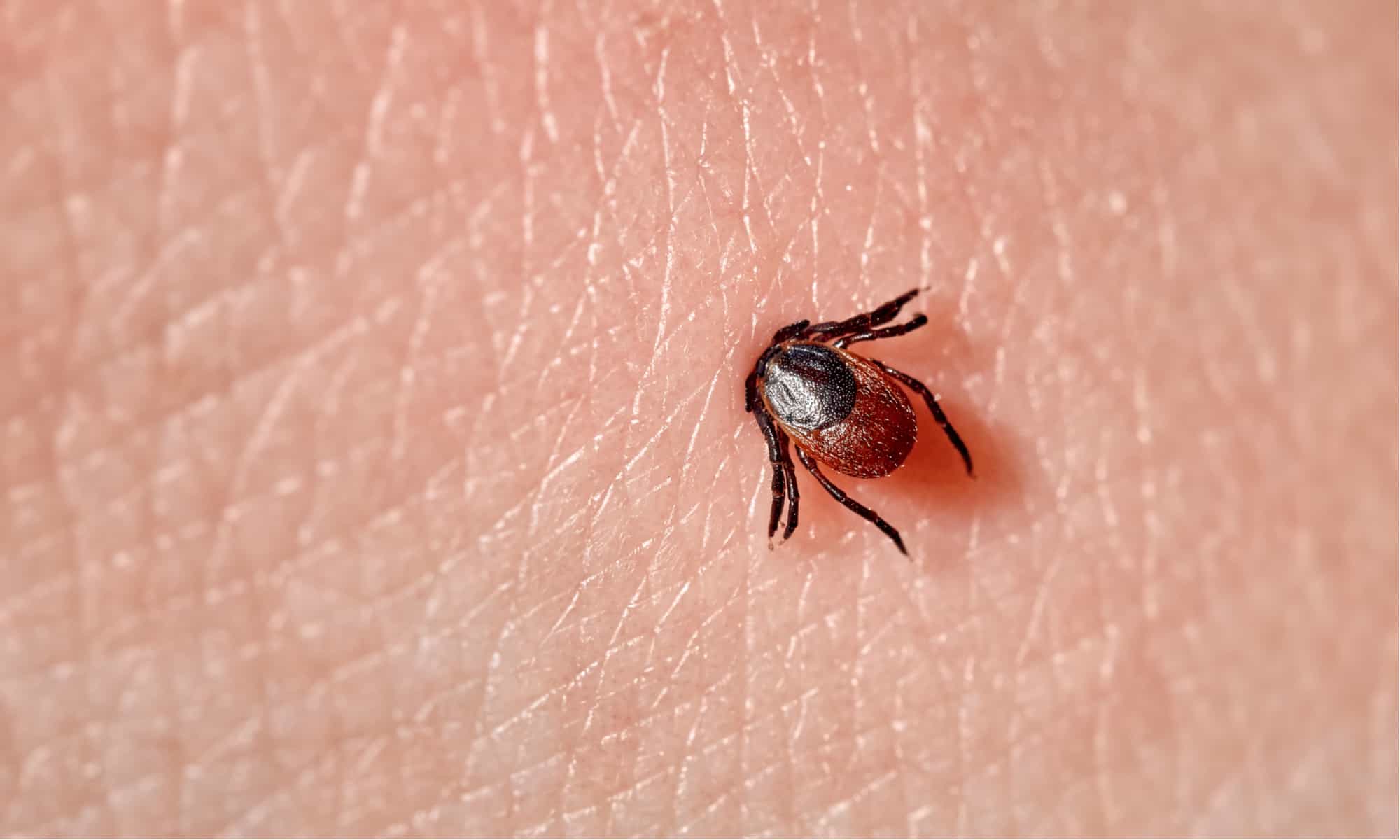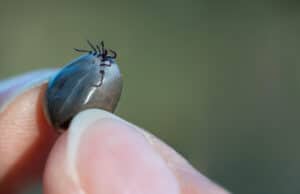Ticks are a growing menace across the world. Even areas that were once thought to be free of ticks are n ow reporting them. Ticks are also spreading out from areas they have been common in to areas where they have never lived before. Much of this spread is caused by changing climate and the increase in population density that ensures the ticks can always find a host species.
In addition to the increased range and number of ticks, the number of disease they spread and incidence of disease transmission has also increased. In the Northeast US, both Lyme Disease and Anaplasmosis have become very common. Other tick borne diseases, such as ehrlichiosis, are also on the rise.
The deer tick and the dog tick are both ticks, but they are named because of the animal they prefer feeding on. Both leave bites on humans and can spread diseases. However, it is the deer tick that is known for Lyme disease. If you see one on you or have been bitten by one, you’ll need to know how to tell them apart. Read on to learn the facts about their identification through size, color, location, habitat, signs of either, and symptoms of Lyme disease or other tick-borne diseases, as well as treatment and prevention of each.
Comparing Deer Tick vs Dog Tick
| Dog tick | Deer tick | |
|---|---|---|
| Taxonomy | Dermacentor variabilis | Ixodes scapularis |
| Common names | American dog tick, wood tick | Deer tick, black-legged tick |
| Hosts | Dogs, cats, deer, raccoons, opossums, coyotes, small field mice, cats, humans | Deer, dogs, cats & other outdoor pets, humans |
| Size | Twice the size of a deer tick | Small |
| Habitat | Open areas with tall grass | Wooded areas & backyards |
| Color | Off-white shield & red-brown body | Black shield & orange-red & brown body |
| Active season | Nymphs May-July, host search April-August | Nymphs May-August, adults October-May |
| Diseases | Tick paralysis, tularemia, Rocky Mountain spotted fever | Lyme disease, babesiosis, anaplasmosis |
| Disease risk | 1/200 chance | 1/4 chance (1/3 adults and 1/5 nymphs carry) |
| Treatment & prevention | Dog & cat treatment, direct removal, inspections, yard upkeep, pesticides | Direct removal, antibiotics, inspections, yard upkeep, pesticides |
The 6 Key Differences Between Deer Ticks and Dog Ticks
Appearance
Knowing the facts about how these two different tick species look will help you with your identification of either. Size, color, and how they appear when engorged are all important. Both will look somewhat paler in color whereas feeding will make them engorged several times their normal size, although it’s only the females that do so.
The deer tick is the smallest of the two with nymphs being poppyseed-sized, and adults being sesame seed-sized. The nymph stage of the deer tick in the smallest and hardest to see. It is also the lifestage that is most likely to spread disease.

Black legged tick also called deer tick.
©Kaldari / Creative Commons – License

Deer tick with its head embedded in human skin.
©Evgeniyqw/Shutterstock.com
The dog tick is twice as large at 1/3 inch. Deer tick males are much smaller than females than dog tick males are compared to females. The dog tick has an off-white shield with a reddish-brown body, while the deer tick has a black shield with an orange-red and brown body. Plus, the dog tick is narrower even though it is larger.

A fully engorged dog tick.
©Afanasiev Andrii/Shutterstock.com
Hosts
Identification of the hosts each tick feeds on will also help you identify which is which. Adult dog ticks feed on dogs, cats, raccoons, deer, and field mice but will also feed on humans, and nymphs will seek out the smaller hosts. Adult deer ticks feed on larger hosts such as deer, dogs, and humans, while nymphs feed on cats, dogs, and humans.
Habitat
Another feature that’s important for the identification of the tick is its location. Dog ticks can live their entire lifespan of two years indoors, but they came from the outdoors. Their natural habitat is open areas with tall grass. On the other hand, deer ticks are in wooded areas and backyards with trees and taller shrubbery. People tend to encounter dog ticks anytime outside, whereas they encounter deer ticks while hiking or in rural areas. Unkempt yards are another popular location for dog ticks.
Active Season
Knowing the facts about when each tick species is active will help you narrow it down to either. Dog tick nymphs are active in May through July and the adults are active April through August. Bites on humans are most common during spring and summer, and the ticks aren’t active during the fall and winter. Deer tick nymphs are active May through August and the adults October through May, with bites on humans being most common during the spring, summer, and fall.
Diseases & Risks
The risk of contracting Lyme disease as well as the higher rate of disease transmission in deer ticks is a major concern. Deer ticks can transmit Lyme disease, babesiosis, and anaplasmosis, while dog ticks can transmit tick paralysis, tularemia, and Rocky Mountain Spotted fever. However, the risk of contracting a disease is very different. Dog ticks have a one in 200 chance, and deer ticks have a one in four chance with one in three for nymphs and one in five for adults carrying Lyme disease.
Signs of a deer tick or dog tick bite on humans are small red bumps the size of a mosquito bite. Symptoms of Lyme disease include an expanding lesion or rash and flu-like aches, with effects ranging from mild to severe.
Treatment & Prevention
Finding an engorged tick means it’s recently fed. A tick can feed on its host for up to five days. With the risk of contracting a disease, such as Lyme disease, it’s important to directly remove ticks less than 24 hours after they’ve attached. Neither bites on humans nor pets need topical treatment other than cleaning unless there are symptoms of allergic reaction.
Ticks should be removed using tweezers or pulled out by hand. There are numerous removal methods that are touted on the Internet, however, all of them increase the likelihood of disease transmission. Tick should never be smothered in oil, grease, alcohol, or any other substance. In addition, they should not be burned or damaged while being removed. All of these methods will cause the tick to regurgitate while still attached to its victim thus injecting any contaminated blood directly into the host.
Inspection of personal items and pets coming in from outdoors as well as yard upkeep are good prevention methods. Pesticides sprayed over large lawns are seldom useful and will kill off beneficial insects. Targeted prevention is more effective. Mice are the most common hosts for ticks over the winter so controlling the mouse population is more effective than broad use of pesticides. Tick Tubes contain nesting material for mice that has been infused with pesticides to kill ticks. The mice carry the material back to their nests and thus treat the area for ticks. These have been shown to be effective if used consistently.
If you have pets, they should be on flea and tick medication year round. It is a myth that ticks are not active during the winter. In cold weather, they are often searching for a warm host to live on. There are many dog and cat treatments that are effective preventions. Nearly all require a veterinary prescription so talk to your vet about tick prevention. It is common to use a short course of antibiotics, specifically oral doxycycline, as a prevention method for Lyme disease if you have been bitten. This applies for anyone over eight years of age and usually if the tick was attached for 24 hours or more.
Up Next…
- Deer Tick these small but nasty insects are the primary transmitters of Lyme disease. Learn more about them here.
- Tick Predators: What Eats Ticks? Ticks are insects, and lots of animals eat insects. Find out which are most likely to eat ticks.
- Dog Tick These larger ticks are not as likely to spread disease as the smaller deer tick, but they are by no means harmless. Check out this article to learn more.
The photo featured at the top of this post is ©
Thank you for reading! Have some feedback for us? Contact the AZ Animals editorial team.






